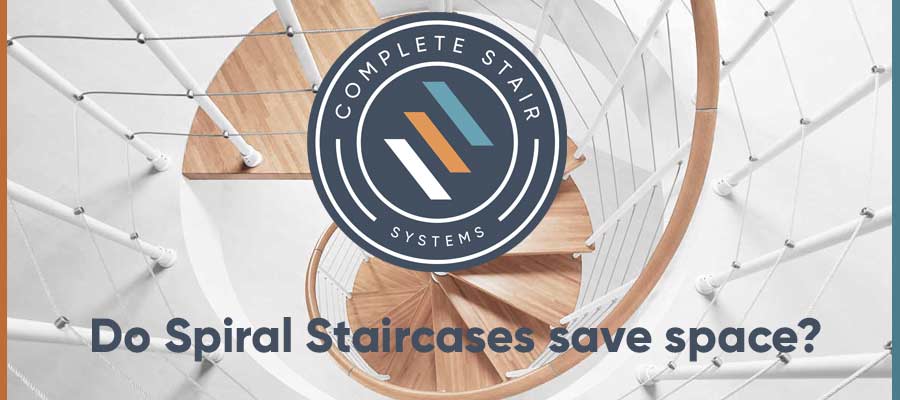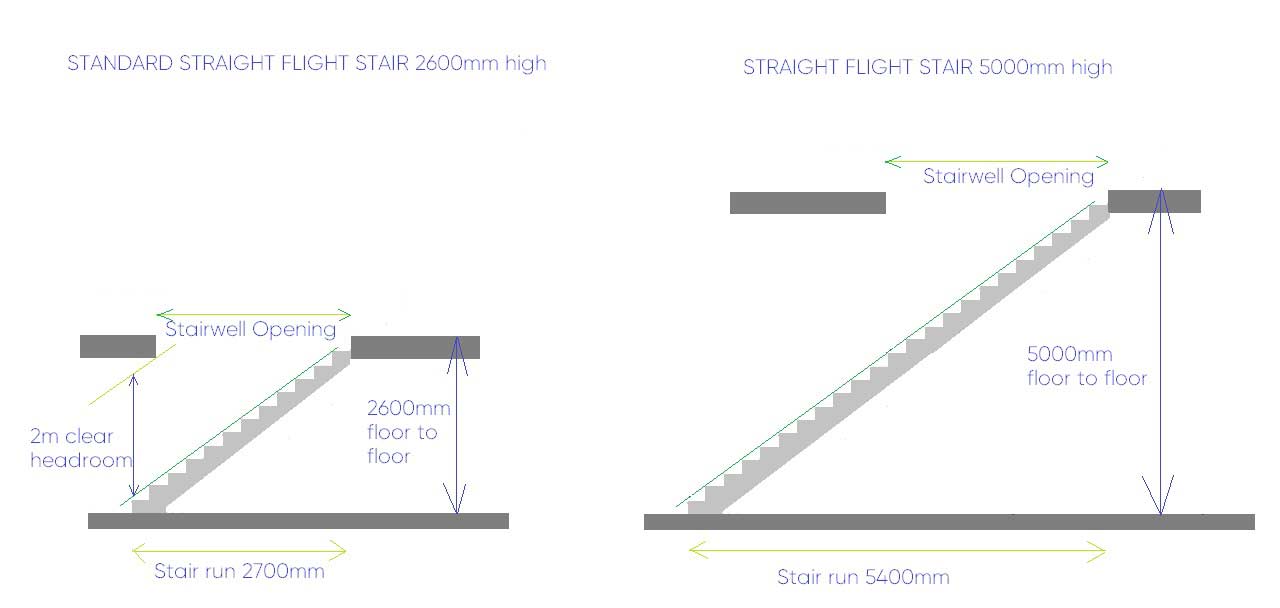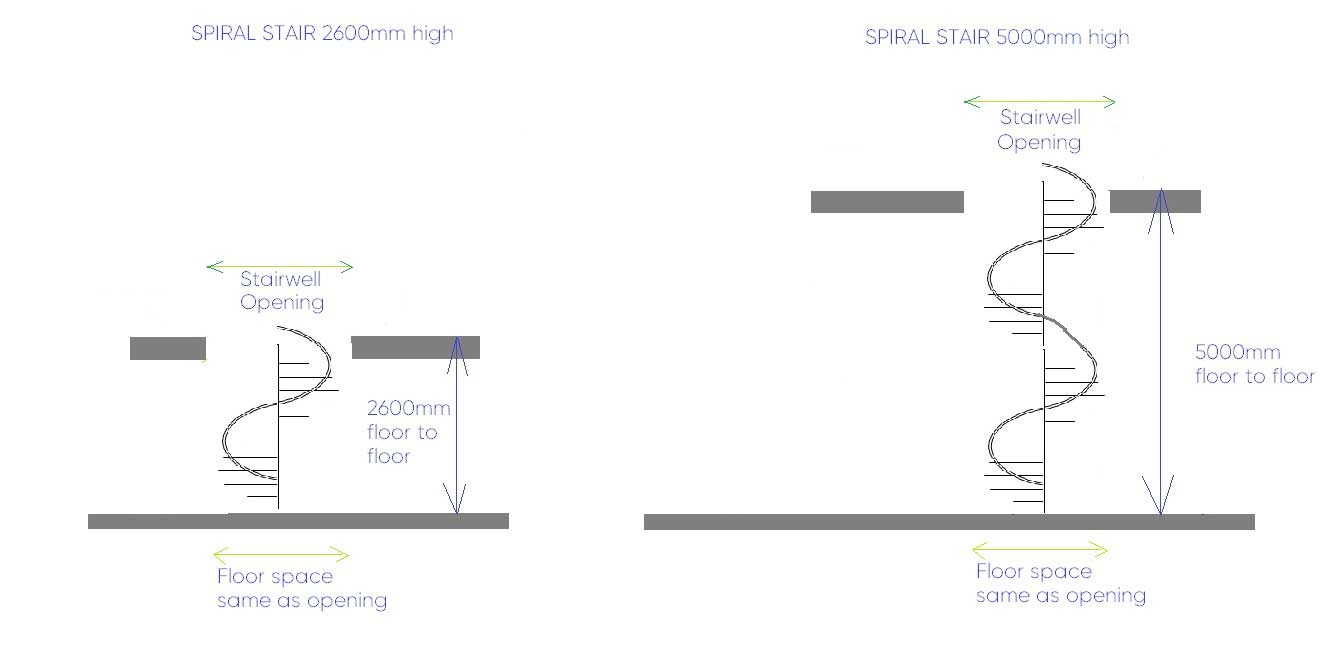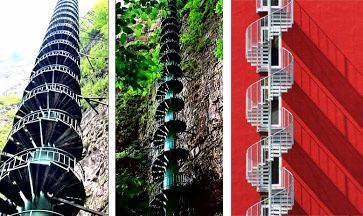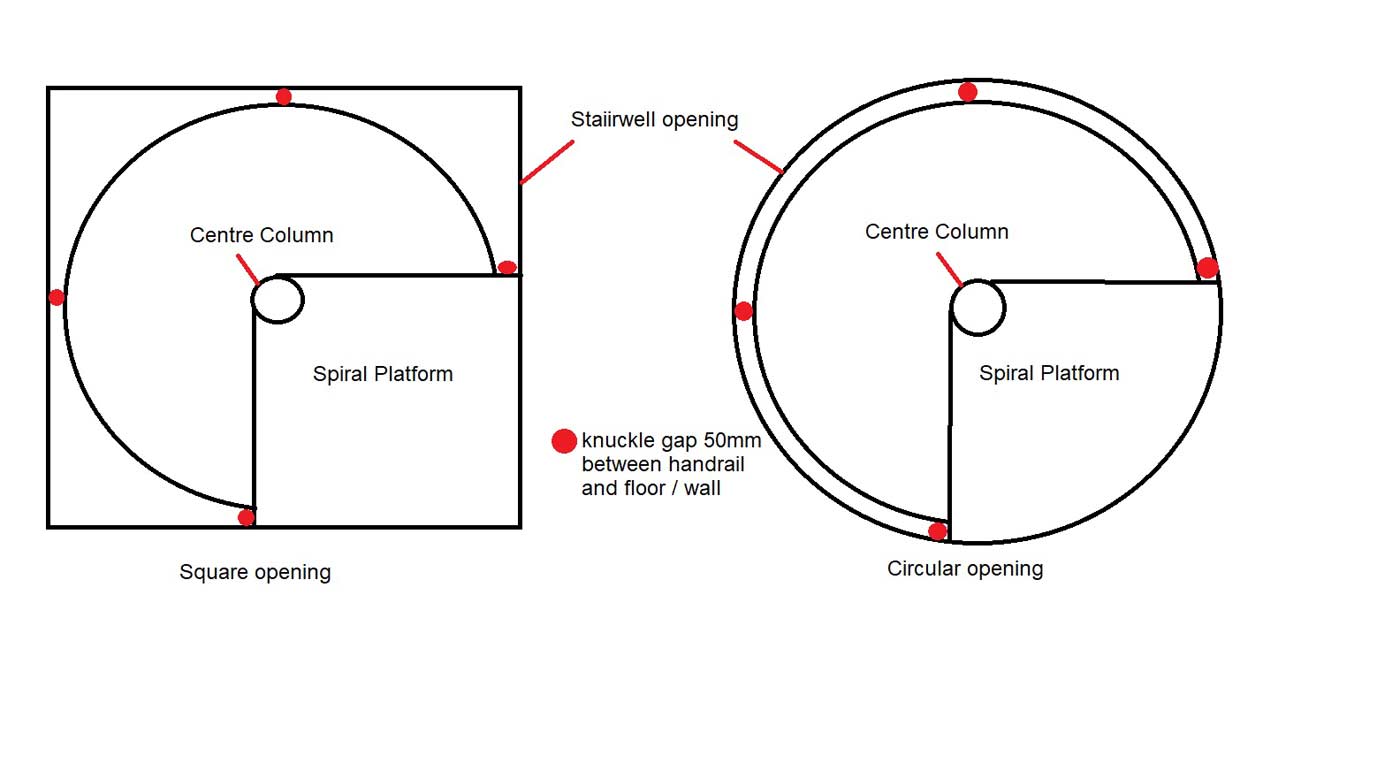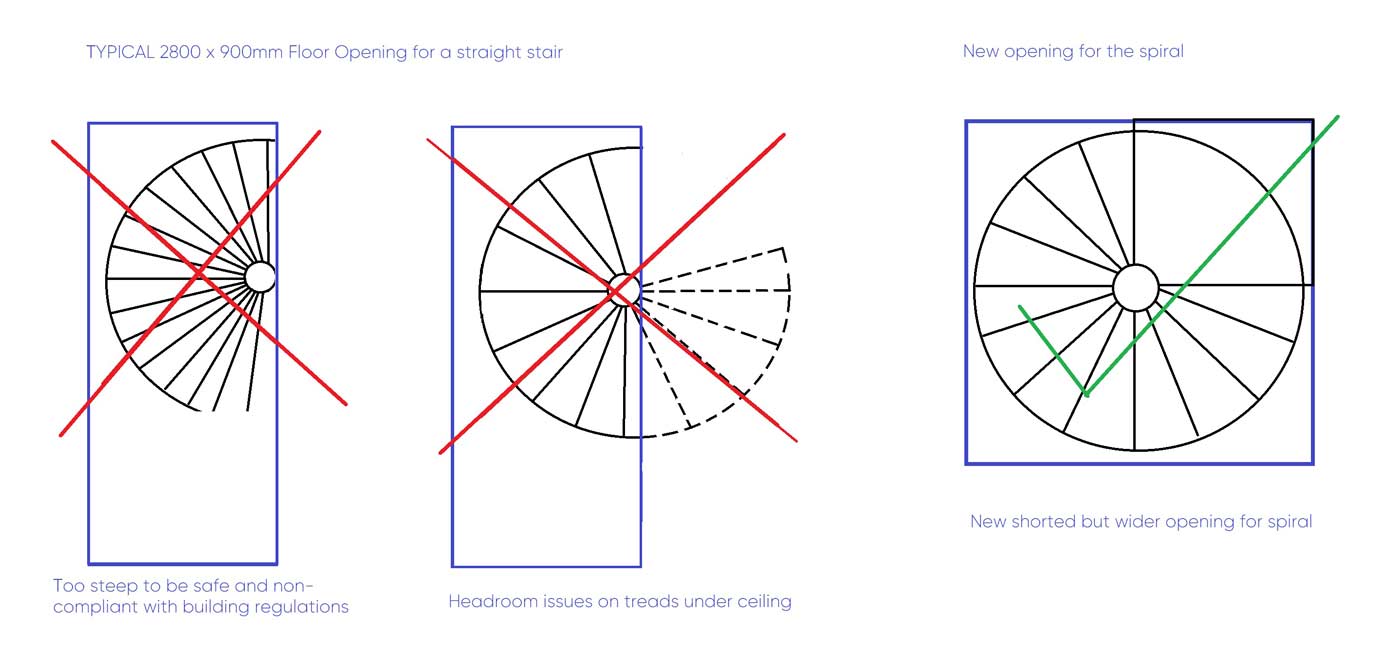Do Spiral Staircases save space?
The main reason spiral stairs were invented was to save floor space. Spiral Staircases do take up less space than conventional staircases. This is because the steps are all located within the diameter of the spiral, regardless of the height.
Floor Space
The stairwell opening is the cut out in the upper floor for the staircase. With a conventional staircase like a straight flight or a dog legged, the opening size will be determined by the shape and width of the flight and the number of steps. What governs the geometry of the stair are the building regulations with the stair unable to be steeper than 42 degrees and the headroom being a minimum of 2m at any point. The space the stair takes up on the lower level increases dramatically when the floor to floor height is higher to factor in the number of steps required.
The example below is an exaggerated view showing the total run of a normal straight flight stair spanning a standard floor height compared with one spanning a 5m floor height.
With a spiral staircase it is the diameter not the height that determines the space it takes up. A spiral spanning a 5m floor to floor height would take up the same space and require the same opening in the floor as one traveling 2m in height. This is because all the steps are contained within the perimeter of the spiral.
The graphic below shows the footprint of a spiral does not change with a change in floor height.
A couple of extreme examples of incredibly high spiral staircases illustrating their space saving attributes.
Spiral Stair floor openings
The opening in the upper floor level will need to be around 1600mm square for a loft or secondary spiral and 2000mm square for a spiral acting as a primary stair within a house. This opening in the floor can also be circular. These sizes are to allow for the required dimeter to meet building regulations with a 50mm knuckle gap clearance on all four sides. These diameters being 1500mm as a secondary and 1900mm as a primary stair. Of course, it is worth checking the diameter requirements with your local building control officer.
Spiral Staircases were invented to save space in tight areas. The floor space sizes above are still valid regardless of the floor to floor height as all the treads are within the diameter of the spiral. This can offer a huge floor space saving on each level.
Replacing an existing stair with a spiral?
This is a very common question we receive. With clients remodelling and improving their home, any space saving element is welcome and a spiral if often considered when looking at a stair replacement. This is trickier and very often not possible because of the size of the opening required. The shape of an existing staircase in a home is generally determined by the size and shape of the opening in the floor above. This would have been designed (hopefully) with enough headroom clearance meaning any dramatic change of stair shape will most likely require a change to the opening size / shape. A spiral needs considerably more than 180 degrees to work and comply to regulations. It is generally 270 degree plus depending on the floor to floor height.
Take an existing straight flight stair for example, being the main access upstairs in a house. Below we have a typical opening in the floor of 2800 x 900mm with the existing stair running straight down a wall. To have a spiral suitable as a main stair we need a 1900mm diameter and a 2000 x 2000mm hole in the floor. That is fine in length but doesn’t work with the current width. Chances are there would be a landing area upstairs so any chance of altering the joists and increasing the opening width is unlikely. This example focuses on a straight flight and would be different with a quarter of half turn. Let us know your scenario and we can confirm if replacing your stair with a spiral is possible.
Spiral Staircases do exactly what they were created to do and that is to save space. They are a little more awkward to use than a conventional flight but can also become a feature within a home. Their most valuable space saving attributes are achieved when they are located in a corner and when they ascend larger heights.
We offer spiral staircases in all shapes and sizes and a large variety of materials. Have a look at our range and let us know your floor to floor height and diameter requirements.
01794 522444 info@completestairsystems.co.uk

